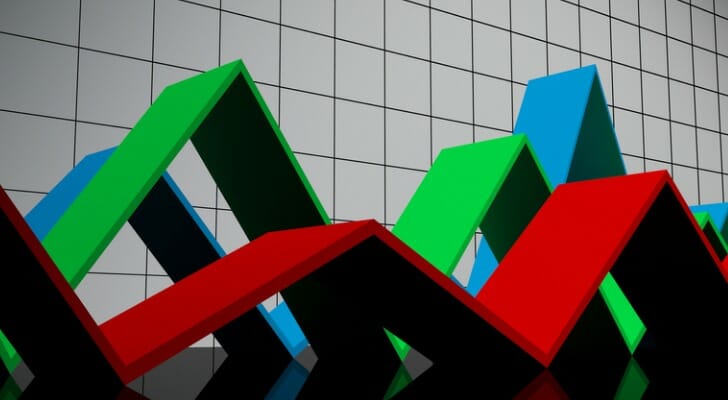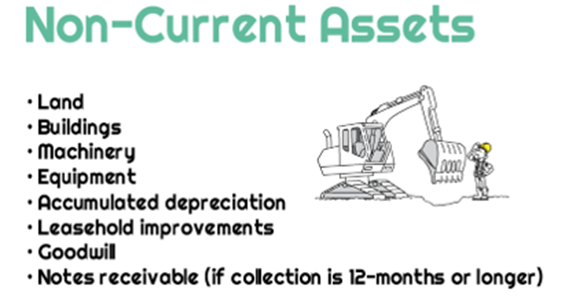Current Assets vs. Noncurrent Assets: What’s the Difference?
Understanding the difference between current and noncurrent assets is essential for any business owner, investor, or finance manager. Whether you're preparing financial statements or assessing certain investments, it's important to understand what each type of asset entails and its importance in the overall equation.
In this article, we'll provide a comprehensive overview of current and noncurrent assets — what they are, how they differ from one another, and the value they bring to businesses — so that you can fully understand their role in achieving your financial goals.
What are business assets?
Business assets are items of economic value owned by a company. Assets can be tangible or intangible and provide long-term financial value to businesses. Current assets, such as cash, inventory, and accounts receivable, are essential for day-to-day operations and short-term financing needs. Noncurrent assets are longer-term financial investments that help generate income over time.
What are the differences between current and non-current assets?
The most important distinction between current and noncurrent assets is their ability to convert into cash quickly.
Non-current assets:
Noncurrent assets are long-term resources that provide economic value to a business over an extended period. Such non-current assets may include land, buildings, machinery and equipment, vehicles, furniture, fixtures and fittings, investments such as stocks and shares, intangible assets such as patents or copyrights, and goodwill.
All of these assets require significant investments from a company, and they are not expected to be converted into cash within the current accounting period.
Current Assets:
Current assets have a less significant initial investment and can usually be converted into cash quickly without any loss of value. Current assets include cash, accounts receivable, inventory and supplies, prepaid expenses, investments with short-term maturities, and marketable securities. Current assets are necessary for a company to meet its day-to-day obligations and any unexpected financial needs.
Both current and noncurrent assets have their unique advantages and disadvantages. Current assets provide businesses with the liquidity needed to cover short-term expenses, while noncurrent assets generate long-term profits.
Current assets can also be quickly liquidated if needed, while noncurrent assets are more difficult to convert into cash and may suffer in value if not carefully managed. On the other hand, noncurrent assets provide businesses with a steady source of income and a cushion against financial downturns.
Valuation of Current and Noncurrent Assets:
The value of current assets is relatively easy to determine since they are expected to be converted into cash quickly. On the other hand, noncurrent assets may be difficult to value due to their illiquid nature.
Since these assets do not produce immediate income and cannot easily be turned into cash, they require extensive analysis to ascertain their worth. Current assets are typically valued at their original cost, while noncurrent assets may be subject to market forces or depreciation over time.
Taxation of Current and Noncurrent Assets:
Current assets are typically taxed at a higher rate than noncurrent assets. This is because current assets generate income shortly, while noncurrent assets generate income over a longer period. Companies may also be able to take advantage of tax deductions for certain types of noncurrent assets, such as depreciation or amortization.
Depreciation:
Current assets are not subject to depreciation, while noncurrent assets may be depreciated over time. This allows businesses to spread out the cost of noncurrent asset purchases over multiple tax years and reduces their taxable income in each of those years.
What are examples of non-current assets?
Non-current assets are long-term investments, including land, buildings, equipment, vehicles, furniture, and fixtures. Intangible assets such as patents and trademarks are also classified as non-current assets. Current assets are typically used to finance the day-to-day operations of a business.
These can include cash and cash equivalents (e.g., money market funds), accounts receivable, inventory, and prepaid expenses. Current assets are expected to be converted into cash or used up within one year or the operating cycle of a business, whichever is longer.
What are examples of current assets?
Current assets are liquid assets that can be quickly converted into cash, such as cash and cash equivalents (e.g., money market funds), accounts receivable, inventories, and prepaid expenses. Current assets are expected to be used up or converted into cash within one year or the operating cycle of a business, whichever is longer.
Understanding the difference between current and noncurrent assets is fundamental in financial management. Current assets serve as short-term sources of liquidity, while non-current assets are used to finance long-term investments such as land, buildings, and equipment. Knowing which type of asset your business holds can help you make better decisions regarding allocating resources, assessing investments, and preparing financial statements. With that knowledge, you can make informed decisions on using your resources best to achieve your goals.
Why is managing your assets so important?
Current and noncurrent assets are vital to any business's overall financial position. Discerning between the two is essential for accurately assessing investments, preparing financial statements, and staying on top of your financial goals. Current assets can be converted into cash quickly (typically within one year), while noncurrent assets are long-term investments that take longer than one year to convert into cash.
Current assets provide businesses the liquidity they need to pay their short-term debts, while noncurrent assets are important for long-term growth and stability. Knowing the difference between current and noncurrent assets can help you make informed decisions about your business's future financial success.
Account for all your assets
The two types of assets are recorded separately on the balance sheet, so it's important to know how to account for all your assets accurately. Current assets include cash and equivalents, marketable securities, accounts receivable, inventories, prepaid expenses, and short-term investments. Noncurrent assets include long-term investments such as property, plants, and equipment, intangible assets such as goodwill and trademarks, long-term debt investments, and deferred tax assets.
It's important to keep track of all your assets to assess your business's value at any given time properly. Current assets are generally more liquid than noncurrent assets, which can be quickly converted into cash. In contrast, noncurrent assets may take longer to liquidate and may be subject to more fluctuations in value. Knowing the difference between current and noncurrent assets can help you make informed decisions about your business's future financial success.
Improve the accuracy of your financial statements.
Understanding the difference between current and noncurrent assets can also help you improve the accuracy of your financial statements. Current assets are first reported on a balance sheet, followed by noncurrent assets. Current liabilities are listed next, followed by noncurrent liabilities. A clear understanding of these differences can help you assess your overall financial picture more accurately and make decisions that will lead to future success.
Identify and manage risks.
The ability to differentiate between current and noncurrent assets can also help you identify risks associated with certain investments. Current assets are considered more liquid, meaning they tend to be less risky than their noncurrent counterparts. Knowing the difference between current and noncurrent assets can help you make informed decisions about risk management and investing to maximize returns while minimizing risks.
Enhance loss prevention
Clearly, understanding current and noncurrent assets can also benefit loss prevention. Current assets are more liquid and tend to fluctuate less, making them ideal for short-term investments with minimal risk. Noncurrent assets may take longer to convert into cash and are generally more volatile, so they should be used for long-term investments with greater return potential. Knowing the difference between these two types of assets can help you make more informed decisions that will help reduce losses and enhance returns.
FAQs
How can asset management software help?
Asset management software can help you keep track of your current and noncurrent assets, as well as monitor performance. The software helps to automate the process of tracking and monitoring changes in asset values, allowing you to make more informed decisions about risk management and investing. It can also provide real-time insights into current market trends, helping you to identify potential investment opportunities.
What is the difference between current and noncurrent liabilities?
Current liabilities are debts that must be paid off within a year, while noncurrent liabilities are long-term debt obligations that take more than a year to pay off. Current assets are liquid and can be easily converted into cash, whereas noncurrent assets may take longer to liquidate and may be subject to more fluctuations in value. Knowing the difference between current and noncurrent liabilities can help you make smarter decisions about managing risk and investing for long-term success.
What is the role of Current Assets vs. Noncurrent Assets in achieving financial goals?
Current assets are more liquid, meaning they tend to be less risky than their noncurrent counterparts and can help you identify risks associated with certain investments. Knowing the difference between these two types of assets can help you make informed decisions about risk management and investing that can enhance returns and reduce losses.
Current assets can also help you prepare more accurate financial statements, which is essential for achieving your short-term and long-term financial goals. Additionally, having a clear understanding of current and noncurrent assets can also be beneficial for loss prevention, as current assets are generally less volatile than noncurrent assets.
Conclusion
As a business owner, investor, or finance manager, it's important to understand the differences between Current Assets vs. Noncurrent Assets and how they can impact your organization's financial goals. Current assets are more liquid, tend to be less risky than noncurrent assets, and can help you identify risks associated with certain investments.







